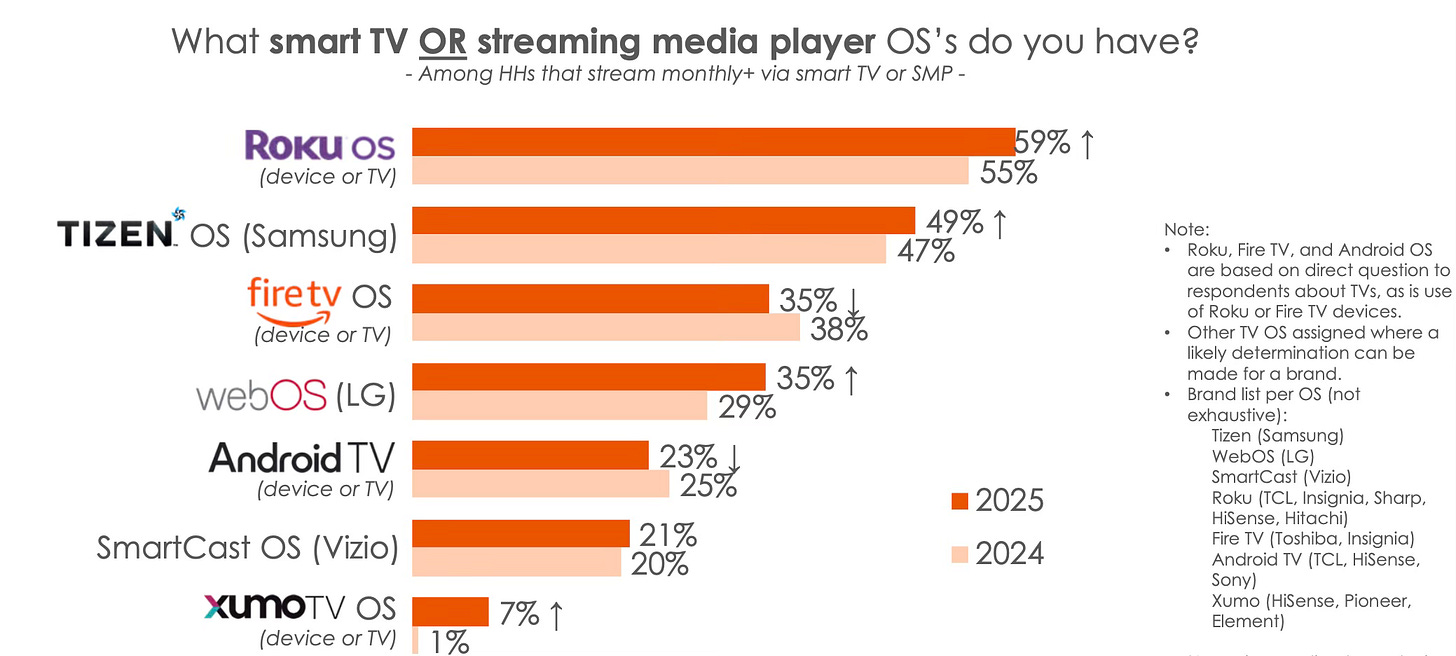Why Apple TV Keeps Falling Short
A faster chip won’t fix it—price, positioning, and perception hold Apple back.
This is a reader-supported publication. If you like what I do, help me keep doing it by upgrading to Streaming Made Easy Premium with this Summer code 🫶
Every few years Apple refreshes its streaming box, and every few years the same question pops up: why can the company that reinvented the phone, watch and laptop never make TV work? The latest rumors of a 2025 Apple TV 4K refresh don’t change the story much. More power, maybe a lower price, perhaps a built-in camera. All of it sounds nice, but it still feels like Apple is tinkering at the edges of a product that has never broken through. Let’s try to understand why.
Today at a glance:
A long, uneasy history with Television
Why it never took off
The market Apple walked into
A shift in strategy
What 2025 brings
Why Apple will keep struggling
BONUS: Streaming Made Easy Live is now FULL. Now I’ve kept a few spots for my Premium subscribers so consider upgrading to an annual subscription with this Summer code then respond to this email saying “sign me up to attend SME Live!”.
Our latest speaker announcements? YouTube and Channel 4 🙌🏻
A long, uneasy history with Television
Apple has spent over three decades flirting with the television business. From the short-lived Macintosh TV in 1993 to the first Apple TV in 2006, to today’s lone Apple TV 4K, the product has never escaped the shadow of being “a hobby”. Then, in 2015, Apple shut down its TV hardware division. Fast-forward to 2022, and Apple was back to one model: the Apple TV 4K.
The numbers tell the same story. Twenty-five million units sold by 2015. Loup Ventures estimated 53 million active devices in 2019. By 2022, Strategy Analytics put tvOS in just 10 million U.S. households (8% of the market). Last year, Parks Associates put Apple TV at a ~10% market share while Apple TV doesn’t even pop up in the latest survey by Hub Entertainment Research.
Either way, compare any of that data to the iPhone’s billion-plus user base, and it’s clear Apple TV is an outlier in the wrong direction.
Why it never took off
The Apple TV hardware itself has rarely been the problem. The 2022 box had an A15 chip, 4K HDR, Dolby Vision, and a fluid tie-in to Apple’s services. Later models added Thread support for smart-home control.
But three core issues kept it niche:




